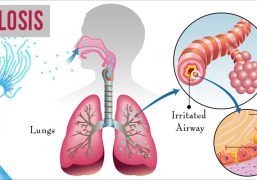Renal Tubular Acidosis
Renal tubular acidosis (RTA) is a group of disorders that affect the ability of the kidneys to maintain a proper acid-base balance in the body. Normally, the kidneys are responsible for excreting excess acid and maintaining the body’s pH within a narrow range. In RTA, there is a defect in the kidneys’ ability to excrete acid, leading to a buildup of acid in the blood and a decrease in blood pH.
There are several different types of RTA, each with its own underlying cause. The three main types of RTA are:
- Type 1 (distal): This is the most common type of RTA and is caused by a defect in the cells of the distal tubules of the kidneys, which are responsible for secreting acid into the urine. In type 1 RTA, the kidneys cannot excrete enough acid, leading to a buildup of acid in the blood.
- Type 2 (proximal): This type of RTA is caused by a defect in the cells of the proximal tubules of the kidneys, which are responsible for reabsorbing bicarbonate (a base) from the urine. In type 2 RTA, the kidneys excrete too much bicarbonate, leading to a decrease in blood pH.
- Type 4: This type of RTA is caused by a deficiency of the hormone aldosterone, which is responsible for regulating the levels of sodium and potassium in the body. In type 4 RTA, the kidneys cannot excrete acid properly due to the lack of aldosterone, leading to a buildup of acid in the blood.
Symptoms of RTA can vary depending on the type and severity of the disorder. Common symptoms may include weakness, fatigue, nausea, vomiting, increased thirst, and frequent urination. In severe cases, RTA can lead to electrolyte imbalances, kidney stones, and chronic kidney disease.
Treatment of RTA depends on the underlying cause and may involve medications to correct electrolyte imbalances, sodium bicarbonate to neutralize acid in the blood, and sometimes dialysis. It is important to seek medical attention if you are experiencing symptoms of RTA, as early diagnosis and treatment can help prevent complications.






